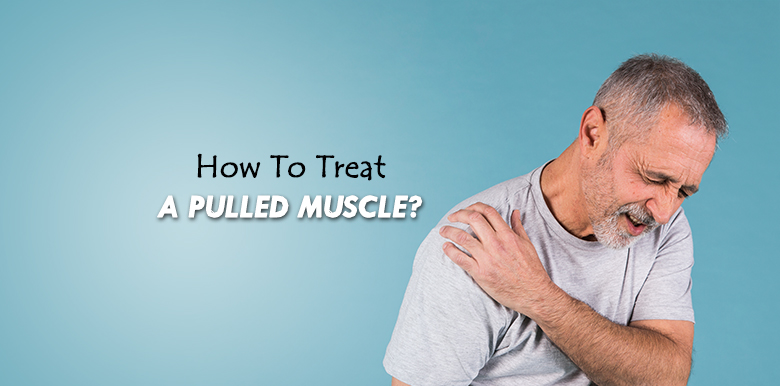A pulled muscle, occurs when a muscle is stretched too far, and microscopic tears occur within the muscle fibers.
The usual symptoms of this type of injury include pain, spasm of the muscle, swelling, bruising, and limited mobility. Often an athlete will feel a sudden grabbing or tearing sensation in the muscle, and then be unable to continue their activities.

Pulled muscle
Most muscle strain injuries will heal with simple treatment steps, but performing the right steps, at the right time, can be critical to ensuring the fastest possible recovery.
As with many injuries, there is a balance between doing too much, or too little, early after the injury.
The amount of activity you will be able to do, and the time required for recovery, is going to vary depending on the severity of the injury. Here are some guidelines to help get you moving in the right direction.
Rest
Rest is recommended for the early recovery phase, lasting 1 to 5 days depending on the severity of the injury. Immobilization is not usually necessary and can be potentially harmful.2 Immobilization in a splint or cast should be carefully supervised by your doctor, as this can lead to stiffness of the muscle.
Ice
Ice application helps reduce swelling, bleeding, and pain. Ice application should begin as soon as possible after sustaining a muscle pull. Ice applications can be done frequently, but should not be done for more than 15 minutes at a time.
Anti-Inflammatory Medications
Anti-inflammatory medications can help reduce swelling and alleviate painful symptoms. These medications do have potential side effects, and you should check with your doctor prior to starting anti-inflammatory medication.
Gentle Stretching
Stretching and strengthening are useful in the treatment and prevention of muscle strain injuries. Muscles that are stronger and more flexible are less likely to be injured.
Strengthening
After injuring the muscle, it is important to regain strength before returning to athletic activities. Both the injury itself and the rest period following the injury can reduce the strength of the muscle. Stronger muscles are less likely to sustain a re-injury.
Heat Applications
Laboratory studies have shown that temperature can influence the stiffness of a muscle. By keeping the body and muscles warm, the muscle is less likely to sustain a strain type of injury.
Avoid Muscle Fatigue
Muscles help absorb energy, and restoring the strength of the muscle will help prevent re-injury.5 Muscles that are fatigued are more likely to be injured.6
Athletes should use caution, especially as they become fatigued, as the muscle becomes more susceptible to strain injuries.
Warm-Up Properly
Warming up prior to athletic competition or sports will help loosen the muscle and prevent injuries. Jumping into a sport with stiff muscles can lead to a higher chance of straining the muscle.
As stated, these are guidelines that will vary depending on the severity of the injury. The best advice to give anyone trying to return to activity is not to focus on return to sports events immediately following the injury. Instead, focus on the early steps, and progress as your body allows.
